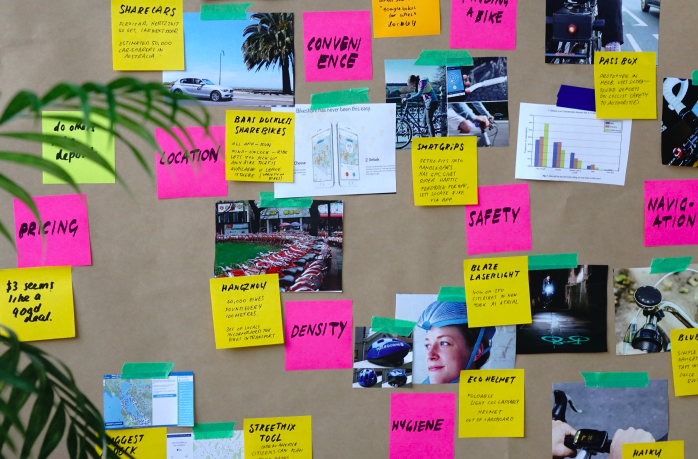
Creating a user-friendly information architecture is very challenging. Structuring the content in the way that users want to see and to stay clear of bias while doing so is a difficult task. The whole purpose of creating such information architecture is to help users find what they are looking for. To help users find what they are looking for you must look at your website from your user’s view.
All of this sounds very interesting, but how do you get your users’ views? Well I have a suggestion ‘Card Sorting’. Card Sorting is a UX research method in which you write the names of the items on index cards, shuffle the deck and ask users to arrange them into piles.
Steps of Card Sorting-
Now after the process, how do you assess the results? Answer to this question is similarity scores. For example, 13 users piled two items together then those two items will have a similarity score of 86.6%. We can assess the outcome by seeing the correlation between the similarity scores.
Types of Card Sorting
Open Card Sorting– In an open card sorting there are no preset categories, the participant is free to create his or her own categories. Usually, this Card Sort is run by UX experts in exploratory stages and gives ideas of users’ mental model. Open Card sort also helps in deciding the naming of the Categories based on users’ terminology.
Closed Card Sorting– In closed card sorting the participant is provided with names of the items and categories. Participants are required to put every item into the category that seems fit to him/her. There are biases in this type of Card Sorting because users are limited to the available Categories for placing the Cards. This limitation might result in the wrong outcome, because it doesn’t necessarily reflect users’ preference for all Cards.
Hybrid Card Sorting–The Hybrid Card Sort method allows the participants to create their own Categories in addition to the predefined Categories in the Card Sort exercise. For information architecture of new products and redesign, Hybrid Card Sort is by far the most popular method used by UX Designers and researchers. Due to the available Categories, participants only create categories when a specific Card doesn’t fit well into the available Categories.
Remote Card Sorting
Remote Card Sorting is a research technique using which you can get testers from all over the world to sort your deck of cards virtually. Using this technique, you can include participants from all over the world in your research. The UXarmy tool makes this type of card sorting a very easy task for the researchers. The UXArmy tool supports all 3 kinds of card sorting mentioned above. It also provides easy to read analysis. Read more about the tool by clicking here.
Steps to Remote Card Sorting

Benefits of Remote card sorting:
Conclusion
Card Sorting is a very useful technique for building a user friendly information architecture. It helps you understand the user’s view and helps you organize content so that it suits your user’s mental models. Modern card sorting techniques like remote card sorting can help you do your research more effectively and efficiently.